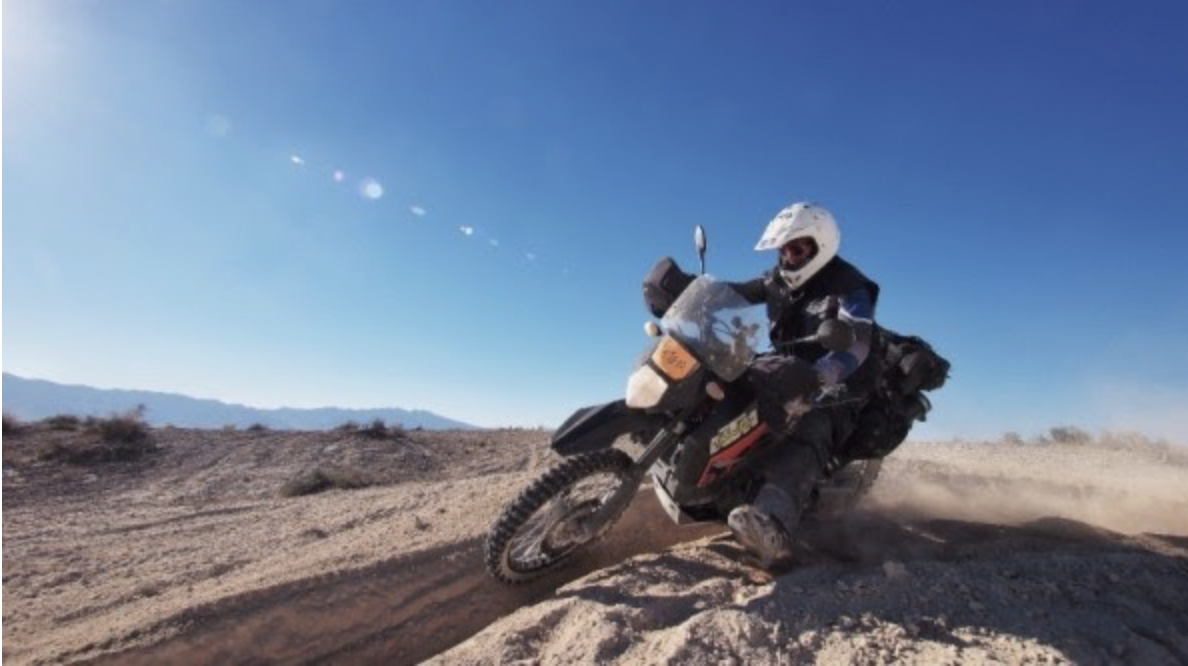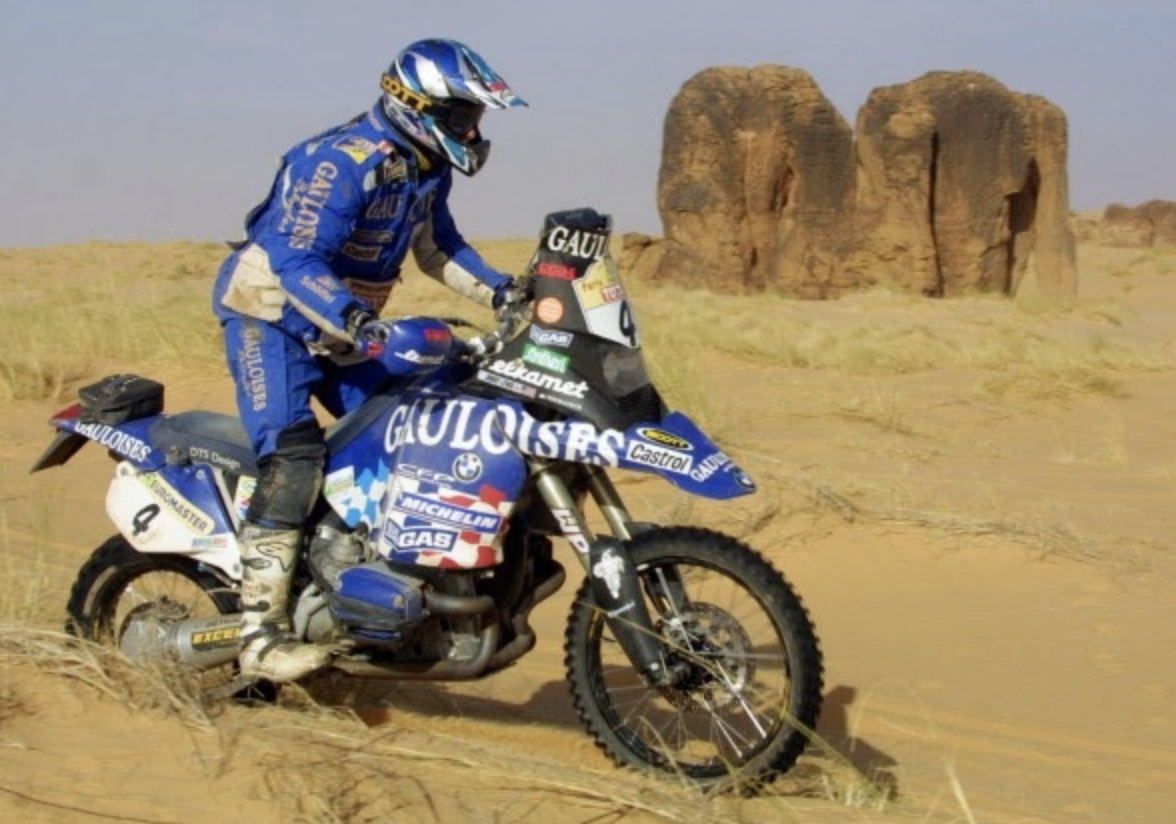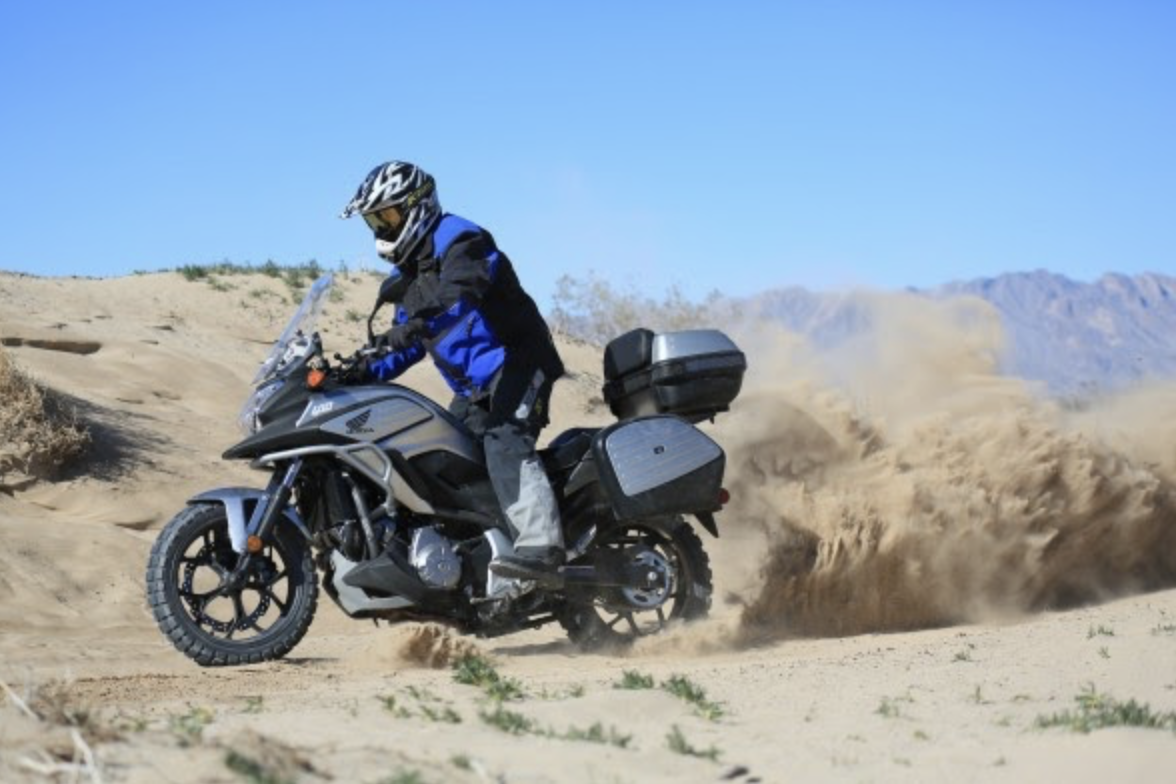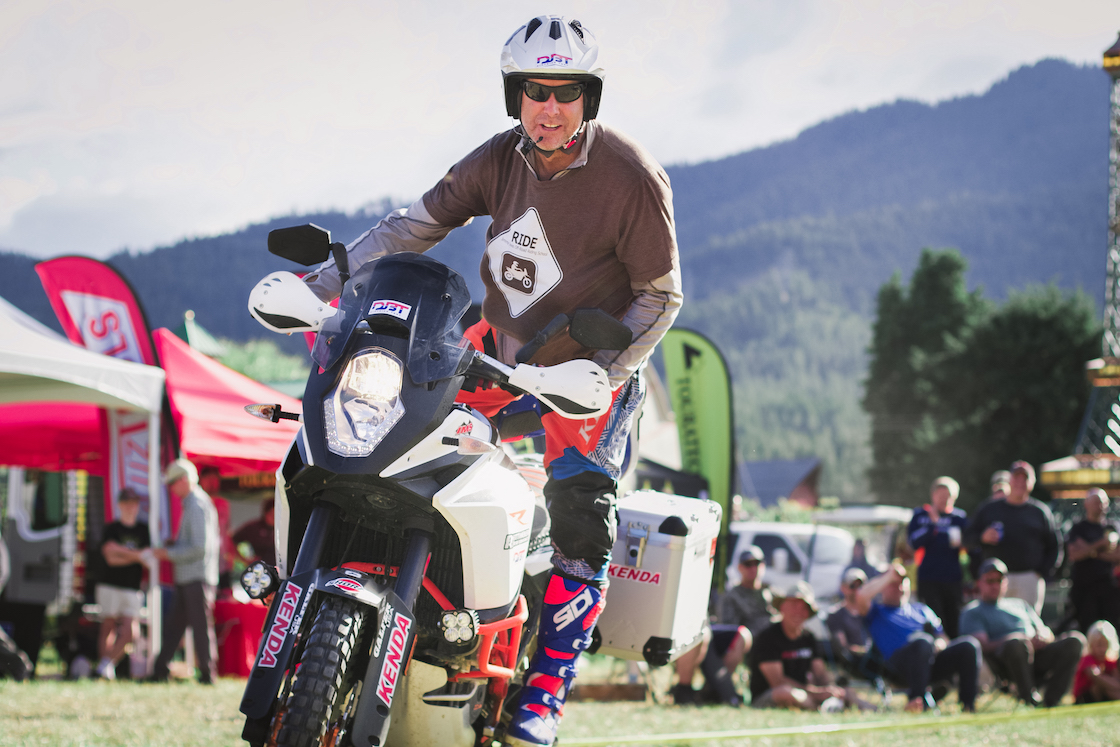By Jimmy Lewis/JLR Off-Road Training
This is one of the easiest things to teach and talk about but the hardest to do in real life when riding. Why? Bad habits! Most riders learn a very scary or defensive riding technique and never fully learn to be in a comfortable balanced position. Or rely on the tight grip on the handlebars that is the root of most of this evil.

Step One:
Rule one is to check yourself to see if you are in a balanced riding position by doing one simple thing–simulating or thinking about letting go of the handlebars! Don’t actually do it unless you are in control enough to try it. Yet if your body position is correct you should feel as if you can let go of the bars. The ultimate goal is to always have a loose grip on the bars with your hands. There are times when you will need to tighten your grip and push or pull on the bars, however, for most riding situations you will be able to maintain a loose comfortable grip. If you are balanced on the bike and on your feet you will not have to hold on tight to keep that balanced position, hence, you should be able to let go of the handle bars.

Step Two:
The next thing about body position is that you have to anticipate what the bike will do. For a beginner rider this is difficult but simple at the same time. If the rider does nothing the bike will do nothing, correct? If you turn the throttle the bike goes. If you use the brakes the bike slows. Anticipate this with your body position and lean the proper way to make it so that you are not having to hold your body with your arms. This goes for whether you are sitting or standing. The trick is bending at the hips, something that you can practice just standing on the ground.

For advanced riders who have the basics down the next thing is to anticipate what the terrain will do to the bike and how the bike will react. This can be as simple as knowing when a rider should be standing on the pegs as opposed to sitting. Most of the time standing is the best option, especially when you want the bike to respond quickly. Standing is almost always the prefered position on heavier adventure bikes. It is more complicated knowing how the bike will bounce or track in different kinds of dirt or undulating terrain. This requires being loose on the bike and sometimes moving out of balance to catch the bike before it catches you off-guard. You will find that most rider’s heads and yupper bodies are never far enough forward so they can’t stay balanced forward to back on the motorcycle.

One of the real keys we have found to starting out right with this technique is having a loose grip on the handlebar and regripping often and comfortably. Novice riders often death grip the handlebar and even in a simple motion like standing up will have their wrists lock them into a very awkward position so they can’t stand up properly. We call it the “squatty-stand” characterised by bent knees and sore calf muscles. Alternately some ADV riders go the route of too much handlebar rise to help them stand up and in effect are actually leaning backwards (or falling back) because they can’t lean forward when accelerating. All a result of not knowing or understanding how the proper position is achieved. (it isn’t by bar position.)
So practice riding more relaxed and more in balance. Put all of your weight on your feet. And if you want to know if you are doing it right then ask yourself if you can let go of the bars? If you answer yes, then you are most likely in the proper and balanced riding position.